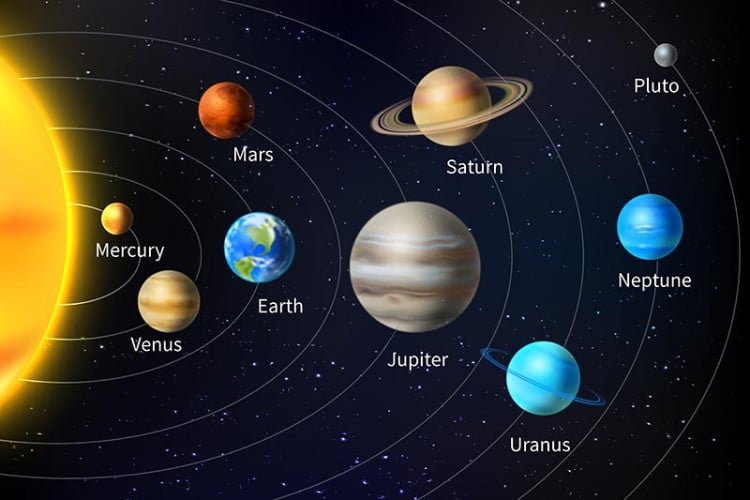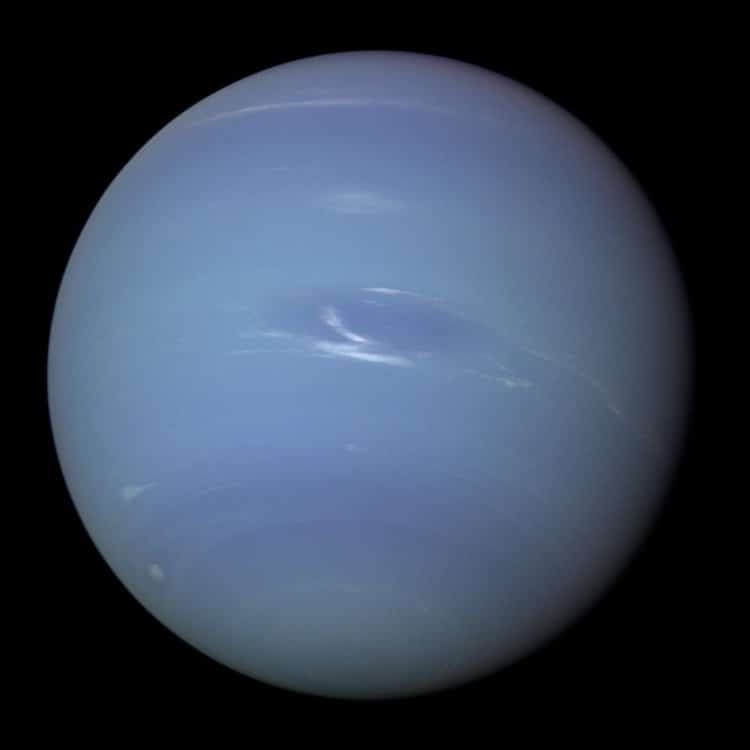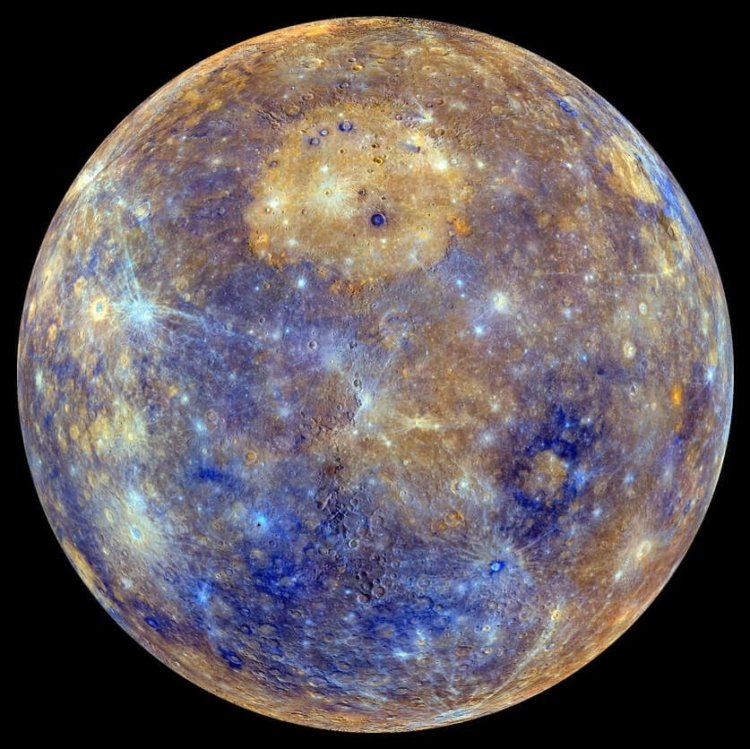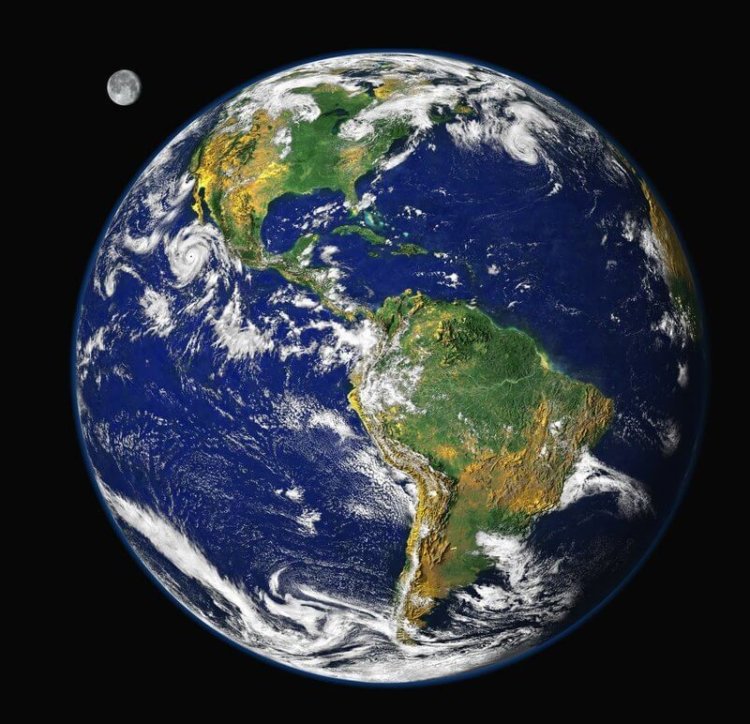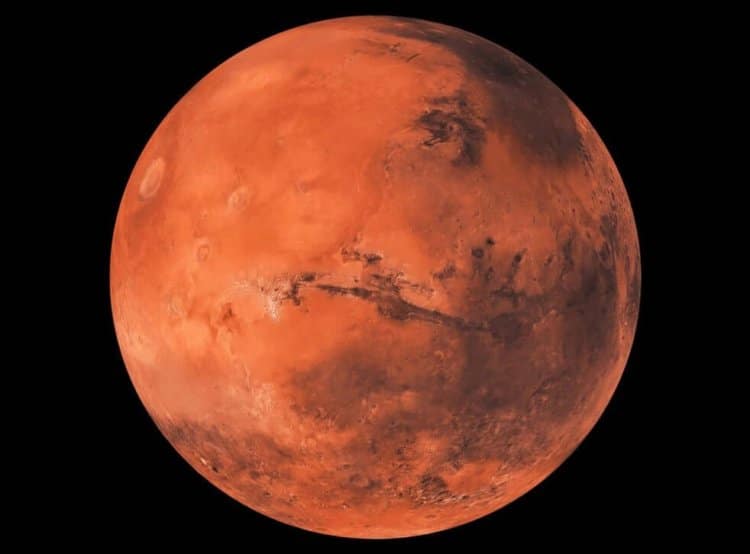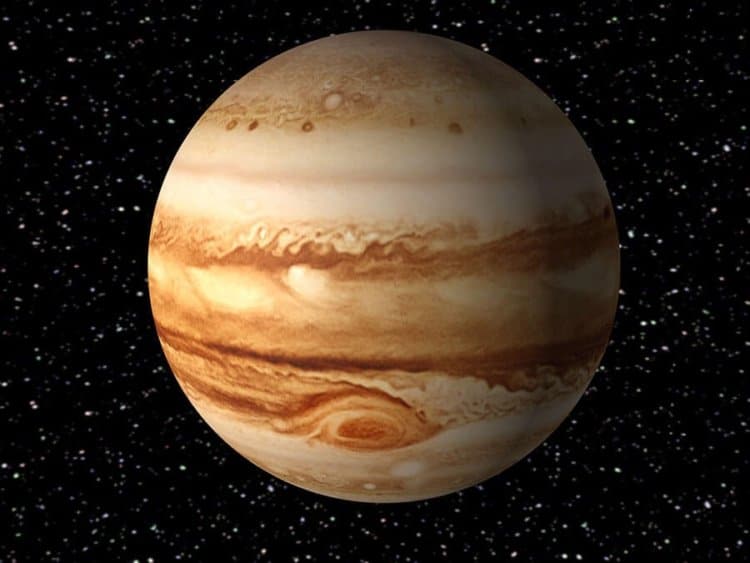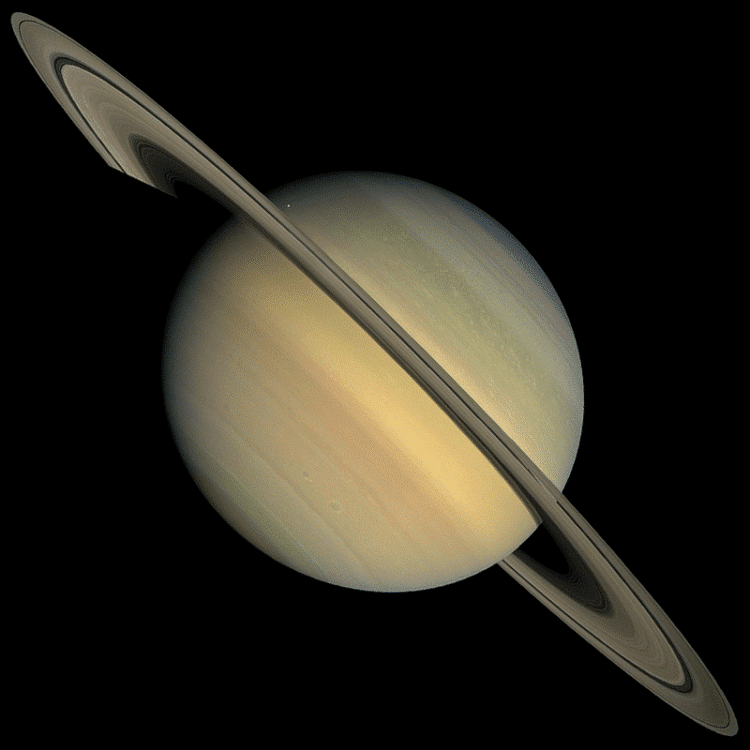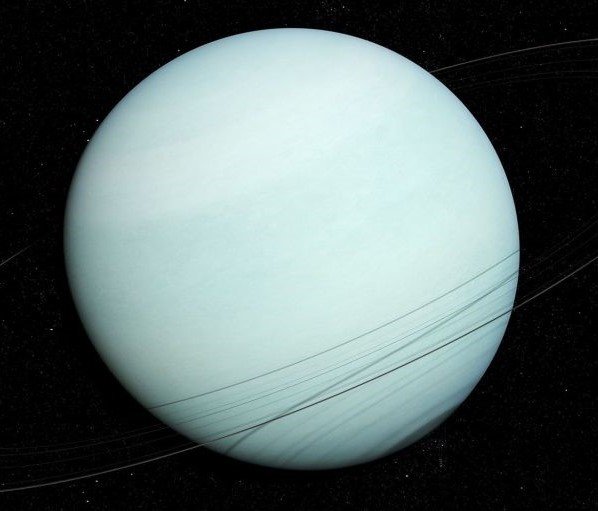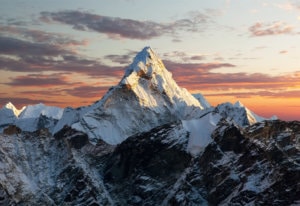The Hottest and Coldest Planets of the Solar System is our topic of interest today. As you know, most of the system’s mass is in the Sun. All components of the solar system revolve around the star Sun. Our system, known as the Solar System, is named after Sol, our sun or star. Everything else, including our planet, is bound to the sun by a gravitational force called orbit. The hottest and coldest planets are also located in this orbit.
The solar system is made up of all the planets, moons, asteroids, comets and other space debris orbiting the sun. The 8 major planets are classified as giant planets and terrestrial planets. The four minor inner system planets, Mercury, Venus, Earth and Mars are terrestrial planets composed mainly of rock and metal. The so-called four outer system planets are giant planets that are significantly larger than terrestrial ones.
The two largest planets are Jupiter and Saturn, gas giants composed mainly of hydrogen and helium; The two outermost planets, Uranus and Neptune, are ice giants composed of substances with relatively high melting points, compared to hydrogen and helium, which are known as volatiles such as water, ammonia, and methane. The temperatures on the planets, on the other hand, depend on the sun and other factors. The temperatures of the planets decrease as they move away from the Sun, while those closer to the Sun are usually hotter. The age of our solar system is believed to be 4.568 billion years. How great is that, isn’t it? Here is the complete list of the Hottest and Coldest Planets in the Solar System ! Happy reading..
Average Temperatures on Planets
Planetary surface temperatures tend to cool as a planet moves away from the Sun. Venus is an exception to this rule, because its proximity to the Sun and dense atmosphere make it the hottest planet in our solar system. The average temperatures of the planets in our solar system are as follows;
1. Mercury – 800°F (430°C) during the day, -290°F (-180°C) at night2 Venus – 880°F (471°C)
3rd Earth – 61°F (16°C)
4. Mars – minus 20°F (-28°C)
5. Jupiter – minus 162°F (-108°C)
6. Saturn – minus 218°F (-138°C)
7. Uranus – minus 320°F (-195°C)
8. Neptune – minus 331°F (-201°C)
9. Pluto – minus 388°F (-233°C)
Hottest Planet
The second planet from the sun and Earth’s closest neighbor, Venus is the brightest object in the night sky after the moon. Venus is the hottest planet in our solar system, despite being twice as far from the sun as Mercury. Yes true! Despite being the closest planet to the sun, Mercury is not the hottest planet in our solar system. So why is this so? Venus’ atmosphere consists almost entirely of carbon dioxide, a very good greenhouse gas. Venus is the hottest planet in our solar system because it is covered by a thick cloud of carbon dioxide and other gases, which prevents heat from the sun from escaping back into space. It is hypothesized that this is why the planet continues to absorb heat from the sun and is getting hotter and hotter. Venus has an average temperature of 880 degrees Fahrenheit, or 462 degrees Celsius. Venus’ atmosphere is so reflective that the planet absorbs only 2.5% of the sun’s energy (50% for Earth). As very few of them reach the surface, there is little change in temperature throughout the Venusian sphere as it orbits the sun.
Coldest Planet
The coldest planet in our solar system is Neptune. Neptune is the farthest planet from the Sun and receives little or no heat from the sun’s rays. For these reasons, its average temperature is quite low. It is -331 degrees Fahrenheit, or -202 degrees Celsius, and consists largely of ice and frozen matter. Neptune is so far from the sun—about 2.8 billion miles—that it is the only planet invisible to the human eye. It is a volatile planet that rotates at a speed of 16 hours. Because of this and its freezing temperatures, Neptune cannot sustain life as we know it.
Planets
1. Venus
• Structure : Terrestrial planet
• Distance to Sun: 108.2 million kilometers
• Equatorial diameter: 12.104 km
• Pole diameter: 12.104 km
• Equatorial circumference: 38.025 km
• Orbital distance: 108,209,475 km
• Mass: 4.87 × 10 power over 24
• The time it takes for sunlight to reach the planet from the sun: 6 minutes
• Surface temperature: 462 degrees Celsius
• Revolution time: 225 Earth days
• Atmosphere: Magnetosphere
• Satellites: No satellites
Venus, the hottest planet in the solar system, is the second planet after the sun. Galileo Galilei was the first astronomer to observe this planet with his telescope and record the findings. Since this planet is the brightest celestial body in the sky, it is named after the Greek Goddess, Aphrodite, and the Roman goddess Venus. It shines very intensely as it reflects about 70% of the sunlight it absorbs. Venus has a retrograde rotation, meaning it moves clockwise from east to west. A fact about Venus is that the daytime and nighttime temperatures are the same.
2. Mercury
• Structure : Terrestrial planet
• Distance to Sun: 57.91 million kilometers
• Equatorial diameter: 4.879 km
• Pole diameter: 4.879 km
• Equatorial circumference : 15,329 km
• Orbital distance: 57,909,227 km
• Mass : 3.285 × 10 power over 23
• The time it takes for sunlight to reach the planet from the sun: 3.2 minutes
• Surface temperature: -173 to 427 degrees Celsius
• Revolution time: 88 Earth days
• Atmosphere: Thin exosphere and magnetosphere. The exosphere contains helium, oxygen, sodium and potassium.
• Satellites: No satellites
Mercury, the closest planet to the sun, can be seen from earth without using a telescope. The first person to observe this planet with a telescope was Galileo Galilei. Mercury moves at about 47 kilometers per second. The surface of this planet is very similar to the surface of the moon, the natural satellite of the Earth.
3. World
• Structure : Terrestrial planet
• Distance to Sun: 147 million km (1AU)
• Equatorial diameter: 12,756 km
• Pole diameter: 12,714 km
• Equatorial circumference : 40.030 km
• Orbital distance: 149.598.262 km
• Mass: 5,972,190,000,000 billion kg
• The time it takes for sunlight to reach the planet from the sun: 7 minutes
• Surface surface temperature: -88 to 58 degrees Celsius
• Cycle time: 365.26 Earth days
• Atmosphere : Consists of nitrogen, oxygen, carbon dioxide and other gases
• Satellites : Moon
Earth, the fifth largest planet in the solar system, is the third hottest planet. It is the only planet in the solar system where life has been observed. The name earth is derived from the Greek word “Gaia” meaning terra matter. It is also believed that its name was inspired by the Roman word “Tellus” meaning fertile land. It is the planet that we live in and that is most suitable for life.
4. Mars
• Structure : Terrestrial
• Distance to Sun: 227.9 million km
• Equatorial diameter: 6,805 km
• Pole diameter: 6,755 km
• Equatorial circumference: 21,297 km
• Orbital distance: 227,943,824 km
• Mass: 6.42 x 10 power over 23 kilograms
• The time it takes for sunlight to reach the planet from the sun: 13 minutes
• Surface temperature: – 87 to -5 degrees Celsius
• Revolution time : 686.98 Earth days
• Atmosphere: Consists of carbon dioxide, argon and nitrogen gases
• Satellites: Two (Phobos & Deimos)
Named after the Greek god of war, Mars is believed to have once had water. Few astronomers believe that this planet even now has water. The planet has a dense core of iron, nickel and traces of sulfur. Craters, plains and volcanoes have been observed on the planet’s surface. It is still the most popular of the planets where life is still sought.
5. Jupiter
• Structure : Gas Giant
• Distance from Sun: 5.2 AU (Astronomical Units)
• Equatorial diameter: 142,984 km
• Pole diameter: 133,709 km
• Equatorial circumference: 142,984 km
• Orbital distance: 778.340.821 km
• Mass : 1.898.130.000.000.000.000 billion kg
• The time it takes for sunlight to reach the planet from the sun: 43.2 minutes
• Surface temperature: -108 degrees Celsius
• Revolution time: 4,332.82 Earth days
• Atmosphere : Contains ammonia crystals and ammonium hydrosulfide clouds
• Satellites : 67 satellites with four important moons (Io, Europa, Ganymede and Calisto)
Jupiter is the fifth and fifth hottest planet from the sun. Although it is quite far from the central star, its day consists of only 10 hours. This means that a day on Earth could be two and a half days on Jupiter. The magnetic field of this planet is 20 times stronger than the magnetic field of the earth. Jupiter’s size is equal to 1,321 Earth’s size.
6. Saturn
• Structure : Giant gas
• Distance to Sun : 9.6 AU
• Equatorial diameter: 120,536 km
• Pole diameter: 108,728 km
• Equatorial circumference: 365,882 km
• Orbital distance: 1.426.666.422 km
• Mass : 568.319.000.000.000.000 billion kg
• The time it takes for sunlight to reach the planet from the sun: 79.3 minutes
• Surface temperature: -139 degrees Celsius
• Revolution time : 29.5 Earth years
• Atmosphere : Contains ammonia, ammonia sulfide and water
• Satellites : 62, three important moons (Titan, Rhea and Enceladus)
Saturn is also known as the ringed planet as it has more than 30 rings. You can see up to 3 rings in a normal telescope and up to 8 in a powerful telescope. It takes about 30 Earth years for this planet to revolve around the sun. However, it rotates around its axis in 10.6 hours. Saturn’s moon Titan is larger than Mercury. This planet weighs about 95 times the weight of the earth.
7. Uranus
• Structure : Ice giant
• Distance to Sun: 19.2 AU
• Equatorial diameter: 51,118 km
• Pole diameter: 49,946 km
• Equatorial circumference: 159,354 km
• Orbital distance: 2,870,658,186 km
• Mass : 86.810.300.000.000.000 billion kg
• The time it takes for sunlight to reach the planet from the sun: 159.6 minutes
• Surface temperature: -197 degrees Celsius
• Revolution time: 84.02 Earth years
• Atmosphere : Contains hydrogen and helium
• Satellites : 13 satellites, 5 notable satellites (Oberon, Titania, Miranda, Ariel and Umbriel)
Uranus, the seventh planet of our solar system, was formally described by William Herschel in 1781. This planet is named after the Greek God Ouranos. Like Venus, it rotates on its side in an east-west direction. This planet has 13 known rings and 27 observed natural satellites.
8. Neptune
• Structure : Ice giant
• Distance to Sun: 30 AU
• Equatorial diameter: 49.528 km
• Pole diameter: 48,682 km
• Equatorial circumference: 155,600 km
• Orbital distance: 4.498.396.441 km
• Mass : 102.410.000.000.000.000 billion kg
• The time it takes for sunlight to reach the planet from the sun: 4.1 hours
• Surface temperature: -201 degrees Celsius
• Revolution time: 165 Earth years
• Atmosphere : Contains methane, hydrogen and helium
• Satellites : 1 important satellite and 14 (Triton)
This massive ice giant planet has 14 known natural satellites and the fastest wind speeds of any planet. The first record of this planet was made by astronomers Urbain Jean Joseph Le Verrier and Johann Galle on September 23, 1846. Its moon Triton is the only natural satellite with retrograde rotation. Bright lights in the distant sky have always intrigued us and captivated our imaginations. Since ancient times, astronomers have been exploring the infinite expanses of the universe to learn more about what’s in it and how it’s formed.

